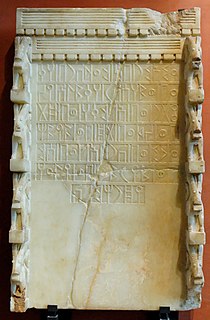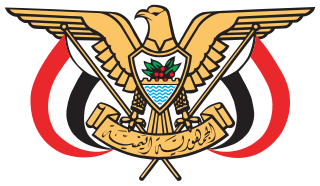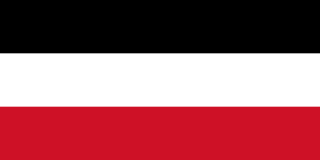
The history of Yemen describes the cultures, events, and peoples of what is one of the oldest centers of civilization in the Near East. Its relatively fertile land and adequate rainfall in a moister climate helped sustain a stable population, a feature recognized by the ancient Greek geographer Ptolemy, who described Yemen as Eudaimon Arabia meaning "fortunate Arabia" or "Happy Arabia". Yemenis had developed the South Arabian alphabet by the 12th to 8th centuries BCE, which explains why most historians date all of the ancient Yemeni kingdoms to that era.

The Politics of Yemen are in an uncertain state due to the Houthi takeover in Yemen. An armed group known as the Houthis or Ansar Allah seized control of the Northern Yemeni government and announced it would dissolve parliament, as well as install a "presidential council", "transitional national council", and "supreme revolutionary council" to govern the country for an interim period. However, the deposed president, Abdrabbuh Mansur Hadi, has declared he is still in office and is working to establish a rival government in Aden.

Aden is a city, and since 2015, the temporary capital of Yemen, near the eastern approach to the Red Sea, some 170 km (110 mi) east of the strait Bab-el-Mandeb. Its population is approximately 800,000 people. Aden's natural harbour lies in the crater of a dormant volcano, which now forms a peninsula joined to the mainland by a low isthmus. This harbour, Front Bay, was first used by the ancient Kingdom of Awsan between the 5th and 7th centuries BC. The modern harbour is on the other side of the peninsula. Aden gives its name to the Gulf of Aden.

The flag of Yemen was adopted on May 22, 1990, the day that North Yemen and South Yemen were unified. The flag is basically the Arab Liberation Flag of 1952, introduced after the Egyptian Revolution of 1952 in which Arab nationalism was a dominant theme. The Arab Liberation Flag served as the inspiration for the flags of both North and South Yemen prior to unification, as well as for the current flags of Egypt, Iraq, Sudan and Syria.

South Yemen, officially the People's Democratic Republic of Yemen, also referred to as Democratic Yemen or Yemen (Aden), was a socialist country that existed from 1967 to 1990 as a state in the Middle East in the southern and eastern provinces of the present-day Republic of Yemen, including the island of Socotra.

The Federation of South Arabia was a federal state under British protection in what would become South Yemen. Its capital was Al Attihad.

The Aden Protectorate was a British protectorate in southern Arabia which evolved in the hinterland of the port of Aden and in the Hadramaut following the conquest of Aden by the United Kingdom in 1839, and it continued until the 1960s. In 1940 it was divided for administrative purposes into the Western Protectorate and the Eastern Protectorate. Today the territory forms part of the Republic of Yemen.

Aden Colony, also the Colony of Aden, was a British Crown colony from 1937 to 1963 located in the south of contemporary Yemen. It consisted of the port of Aden and its immediate surroundings.

The State of Aden was a state constituted in Aden within the Federation of South Arabia. Following its establishment on 18 January 1963, Sir Charles Johnston stepped down as the last Governor of Aden.
South Arabia also known as Greater Yemen is a historical region that consists of the southern region of the Arabian Peninsula, mainly centered in what is now the Republic of Yemen, yet it has also historically included Najran, Jizan, and 'Asir, which are presently in Saudi Arabia, and the Dhofar of present-day Oman.

Lahej, the Sultanate of Lahej, or, sometimes, the Abdali Sultanate, was a Sheikdom based in Lahej in Southern Arabia. The Sultanate became self-ruled in 1728 and gained independence in 1740. In 1839, the Sultanate became Aden Protectorate of the British Empire, though nominally the 'Abdali Sultan retained his status. The Aden Protectorate was briefly ruled again by the Ottomans during World War I, but regained by the British and absorbed into Federation of South Arabia in 1963. The 'Abdali dynasty was officially abolished in 1967, with the proclamation of South Yemen.
Yemeni unification took place on May 22, 1990, when the area of the People's Democratic Republic of Yemen was united with the Yemen Arab Republic, forming the Republic of Yemen.
The modern history of Yemen began with the withdrawal of the Ottoman Empire. In 1839 the British set up a protective area around the southern port of Aden and in 1918 the northern Kingdom of Yemen gained independence from the Ottoman Empire. North Yemen became a republic in 1962, but it was not until 1967 that the British Empire withdrew from what became South Yemen. In 1970, the southern government adopted a communist governmental system. The two countries were formally united as the Republic of Yemen on May 22, 1990.
This is a survey of the postage stamps and postal history of Yemen.

The National Liberation Front (NLF) was a Marxist paramilitary organization and a political party operating in the Federation of South Arabia, during the Aden Emergency. During the North Yemen Civil War, fighting spilled over into South Yemen as the British attempted to establish an autonomous colony known as the Federation of South Arabia. Following the exit of the British armed forces, the NLF seized power from its rival, the Arab nationalist Front for the Liberation of Occupied South Yemen (FLOSY). In the aftermath of the Emergency, the NLF reorganized itself into the Yemeni Socialist Party and established a single-party Marxist-Leninist government, known as the People's Democratic Republic of Yemen.

The Front for the Liberation of Occupied South Yemen (FLOSY) was an Arab nationalist military organization operating in the Federation of South Arabia in the 1960s. As the British tried to exit its Federation of South Arabia colony Abdullah al Asnag created FLOSY. FLOSY attempted to seize power when the British left from another military group operating in South Arabia, the Marxist National Liberation Front (NLF).

Elections to the Legislative Council were held in the Colony of Aden on 4 January 1959.
The Arab Police mutiny was an incident during the Aden Emergency where Arab soldiers and police mutinied against British troops. While the mutiny itself was localized and quickly suppressed, it undermined the South Arabian Federation which had been organized by Britain in 1959 as an intended successor to direct colonial rule.
The following is a timeline of the history of the city of Aden, Yemen.












